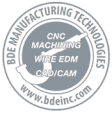Posted On: May 8, 2017
Today, very often we hear the term “sheet metal”, which is nothing but metal rolled into thin sheets. Various products, such as automobile bodies, furnaces, gutters, roofing, and air conditioners are created using sheet metal. These products are created by punching, cutting, bending, or stamping sheet metal. When compared to some other machining processes, creating sheet metal parts is easier. However, there are various important design-for-manufacturability issues to consider. This post discusses quick tips, and tolerance specifications for creating sheet metal parts.
Guidelines for Sheet Metal Design for Manufacturability
The following tips will help minimize errors during the sheet metal designing.
1. Bends: These are the most popular feature of sheet metal parts, and are created by various techniques and machines, which may minimize the need for the below mentioned tips. However, the following tips will be helpful for designing cost effective, and precise parts.
1.1 For the precision and ease of manufacturing, if multiple bends are on the same plane, try designing the part such that all bends are in the same direction. This will help save the operator’s effort to flip the part. This tip is also valid for panel benders and man leaf, which can bend only in a single direction per set up.
1.2 All bends should be toleranced + or – ½ ° at a location, which is adjacent to them.
1.3 It is recommended to avoid large parts with detailed or small flanges. Managing a large part through each bend can be exhausting for an operator. This may lead to reduced part accuracy.
1.4 If using a low carbon steel metal, the minimum bend radius should be half the thickness of the material or 0.03 inch – whichever is larger.
2. Counterbores: These are flat-bottomed, cylindrical-shaped holes that are created in a sheet metal. Counterbore holes are usually created in standard dimensions for a certain screw size. The following tips will help ensure precision:
2.1 The minimum distance between two counterbore holes should be eight times the thickness of the metal sheet.
2.2 The minimum distance between a counterbore to an edge should be four times the thickness of the metal sheet.
2.3 The minimum distance between a counterbore to a bend should four times the thickness of the metal sheet + bend radius.
3. Countersinks: These are conical-shaped holes created in a metal sheet to hold a countersunk bolt or screw. The following points should be kept in mind while creating them.
3.1 The maximum depth of the countersunk hole should be 3.5 times the thickness of the material.
3.2 It is desirable to have a minimum of 50% contact between the countersink and the hardware.
3.3 The minimum distance between two countersink holes should be eight times the thickness of the material.
3.4 The minimum distance between the countersink and one edge should be four times the thickness of material.
3.5 Like counterbore, the minimum distance between a countersink and bore should be four times the metal sheet thickness + bend.
We will discuss the other important features of sheet metal DFM in the next post.
 info@bdeinc.com
info@bdeinc.com 866.262.6233
866.262.6233





